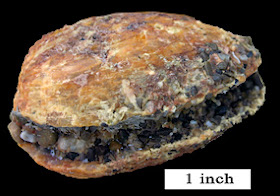I was heading toward a fun, frolicky look at this cool Christmas tree "pushing through the roof" in Boise, Idaho, for the last PEOTS post of the year (both similar to and different from the banana plant pushing through the Lyman conservatory roof at Smith College):
But, then my incredible daughter and I got together yesterday. She shared some of the important research going on in Dengue Fever, a mosquito-borne illness.
Zoë's semester in Costa Rica is pointing her to a career in immunology. Here's her list of classes this upcoming senior semester: 1) Infectious Diseases, 2) Virology, 3) Biological Anthropology, 4) Psychological Anthropology, and 5) her Capstone course on her experience learning about Dengue Fever.
This December, 2014, research describes the promise of a new Dengue Fever vaccine based on a certain antibody found in the blood of some people with Dengue:
"The researchers spotted the new group of antibodies while they were studying blood drawn from patients who picked up dengue infections in south-east Asia. They found that about a third of the immune reaction launched by each patient came from a new class of antibodies. Instead of latching on to a single protein on the virus surface – as usually happens – the new group of antibodies latches on to a molecular bridge that joins two virus proteins together. When antibodies bind to viruses, they make them targets for attack from the wider immune system.
In tests described in the journal Nature Immunology, the researchers found that the newly identified antibodies were highly effective at fighting the dengue virus in mosquitoes and in patients. But more surprising, and useful for a vaccine, they also neutralised all of the different forms of the germ."
Dengue symptoms are illustrated here in the febrile, critical and recovery phases:
Dengue Fever kills upwards of 22,000 people a year so developing a vaccine is critical.
One of the most important parts of preventing the spread of Dengue is to spray potential mosquito breeding grounds.
This brand new mosquito reporting ap (December 28, 2014) allows Costa Ricans to report areas of potential mosquito-breeding grounds. Prevention of mosquito growth is a huge part of containing the disease and reducing epidemics.
Dengue Fever outbreak areas, as we've discussed here before, are expanding from equatorial areas, including some cases in the south and midwest United States.
To bring things full circle, sometimes you break through the glass ceiling. . .
and sometimes you just start again on the top of the ceiling/roof. Zoë will figure out a way. Watch out, Dengue Fever!
Happy New Year, Zoë, and PEOTSians All!
All the best for 2015!
Steph
My friends know me well; this arrived Saturday (with a mazarine pashmina):
Truly TEAR-able; take one for the road:
Zoë's semester in Costa Rica is pointing her to a career in immunology. Here's her list of classes this upcoming senior semester: 1) Infectious Diseases, 2) Virology, 3) Biological Anthropology, 4) Psychological Anthropology, and 5) her Capstone course on her experience learning about Dengue Fever.
This December, 2014, research describes the promise of a new Dengue Fever vaccine based on a certain antibody found in the blood of some people with Dengue:
"The researchers spotted the new group of antibodies while they were studying blood drawn from patients who picked up dengue infections in south-east Asia. They found that about a third of the immune reaction launched by each patient came from a new class of antibodies. Instead of latching on to a single protein on the virus surface – as usually happens – the new group of antibodies latches on to a molecular bridge that joins two virus proteins together. When antibodies bind to viruses, they make them targets for attack from the wider immune system.
In tests described in the journal Nature Immunology, the researchers found that the newly identified antibodies were highly effective at fighting the dengue virus in mosquitoes and in patients. But more surprising, and useful for a vaccine, they also neutralised all of the different forms of the germ."
Dengue symptoms are illustrated here in the febrile, critical and recovery phases:
Dengue Fever kills upwards of 22,000 people a year so developing a vaccine is critical.
One of the most important parts of preventing the spread of Dengue is to spray potential mosquito breeding grounds.
This brand new mosquito reporting ap (December 28, 2014) allows Costa Ricans to report areas of potential mosquito-breeding grounds. Prevention of mosquito growth is a huge part of containing the disease and reducing epidemics.
Dengue Fever outbreak areas, as we've discussed here before, are expanding from equatorial areas, including some cases in the south and midwest United States.
To bring things full circle, sometimes you break through the glass ceiling. . .
and sometimes you just start again on the top of the ceiling/roof. Zoë will figure out a way. Watch out, Dengue Fever!
Happy New Year, Zoë, and PEOTSians All!
All the best for 2015!
Steph
Truly TEAR-able; take one for the road:
















.jpg)


.jpg)

.jpg)





























